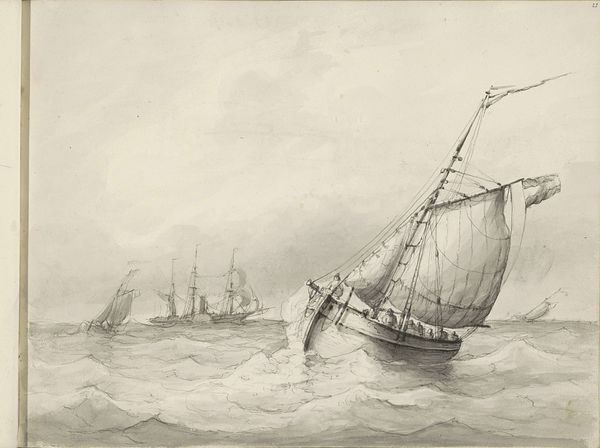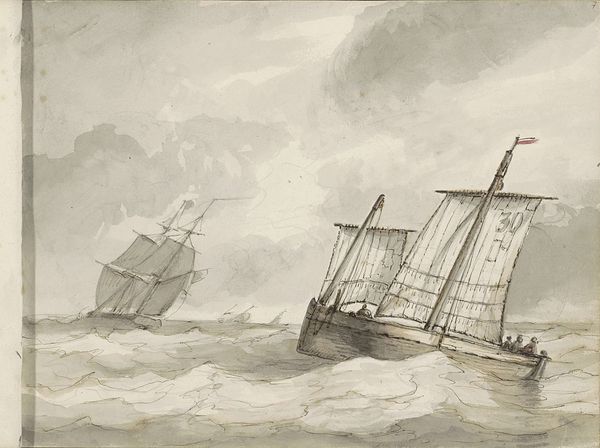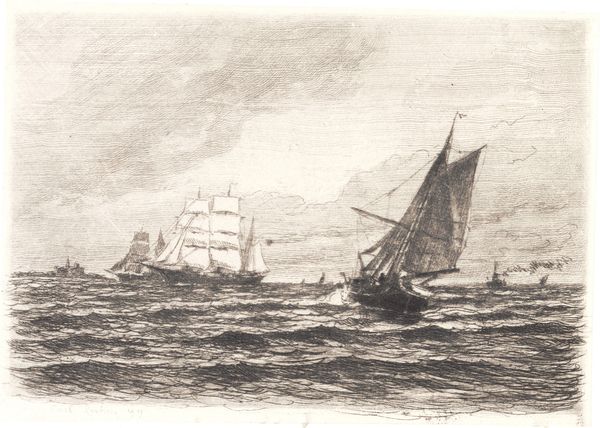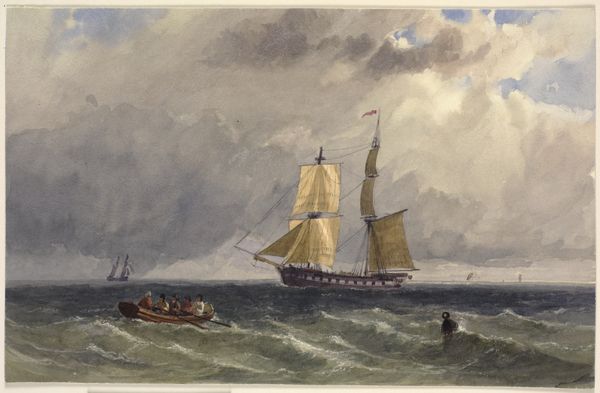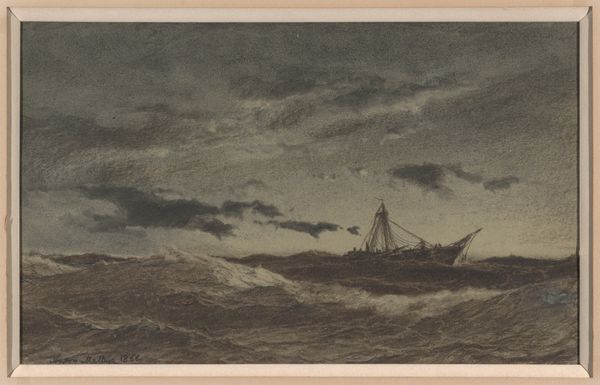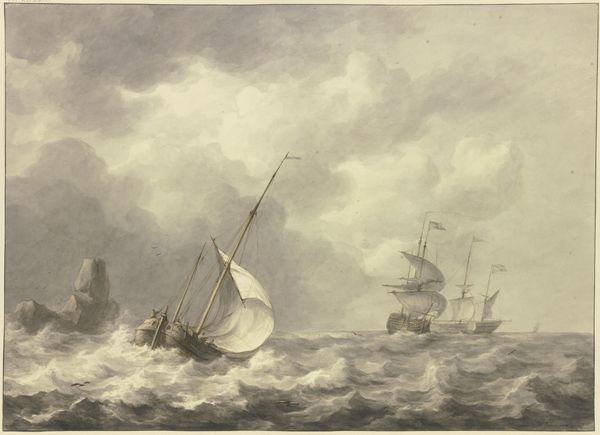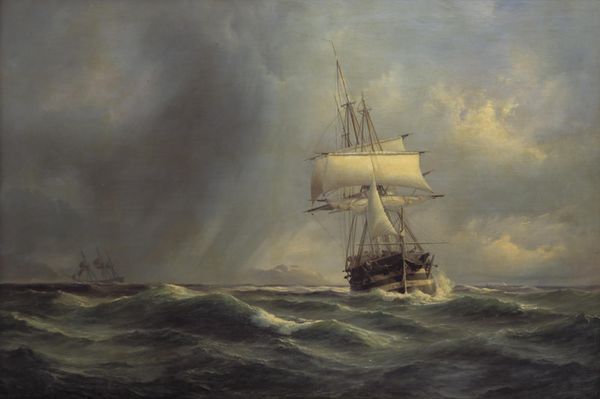
drawing, plein-air, paper, watercolor, ink, pencil
#
drawing
#
16_19th-century
#
plein-air
#
pencil sketch
#
landscape
#
paper
#
watercolor
#
russian
#
ink
#
pencil drawing
#
romanticism
#
pencil
#
watercolour illustration
#
watercolor
#
sea
Copyright: Public Domain
Editor: Here we have "Ein Segelschiff auf hoher See," or "A Sailing Ship on the High Seas," created around 1850 by Ivan Konstantinovich Aivazovsky. It appears to be a drawing using pencil, ink, and watercolor on paper, currently housed at the Städel Museum. There's something haunting about the limited palette... the monochromatic shades of sepia, almost. How do you read the visual structure of this work? Curator: Note the interplay between the geometric rigidity of the ship and the fluid, almost chaotic, rendering of the sea and sky. The artist’s precise linework in depicting the vessel contrasts sharply with the blurred washes of color used to create the turbulent waves and overcast atmosphere. It's a fascinating dynamic, isn't it? Editor: It is! What’s the effect of this contrast in textures? Curator: By employing such different techniques within a single composition, Aivazovsky establishes a visual hierarchy. Our eye is immediately drawn to the ship, a symbol of human ingenuity and perhaps even ambition, while the sea, rendered in softer, more yielding forms, acts as both a stage and a force against which this vessel must contend. Do you perceive a sense of scale here? Editor: Definitely. The ship seems small against the immensity of the ocean. It feels both vulnerable and resolute. I see it's titled as a drawing, yet there's a strong painterly quality to the waves. Curator: Indeed. He has masterfully exploited the textural possibilities of watercolor to create a sense of depth and movement. The graded washes suggest the constant motion of the water, almost vibrating before us. Considering all of these choices – texture, scale, light, shape – what underlying structure are you seeing? Editor: I see what you mean; considering his emphasis on contrasts, this is more than just a sketch, it's a fully formed study in Romantic tension. The sea as raw power versus the ship’s delicate geometry. Curator: Precisely! It becomes clear that Aivazovsky isn't merely depicting a ship; he's exploring fundamental dichotomies through the very syntax of artmaking.
Comments
No comments
Be the first to comment and join the conversation on the ultimate creative platform.

